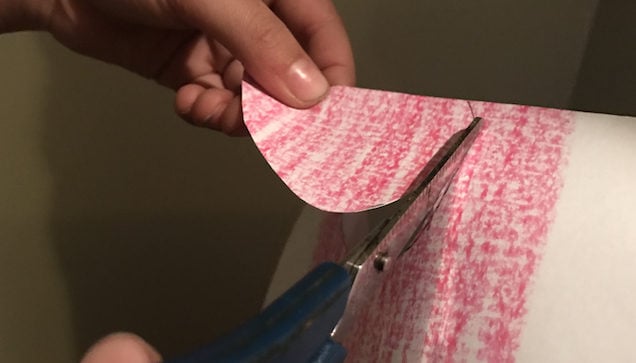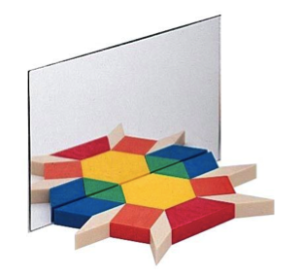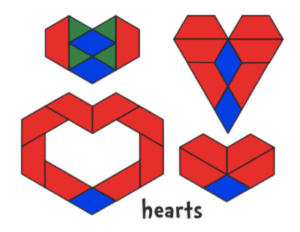Series: Ideas at Work
Valentine’s Day Math Can Spark a Love of Symmetry

Cutting paper hearts for Valentine’s Day math fun is a common, early experience with symmetry for many young children. What joy to open a folded paper and discover a heart with two identical sides!
A shape has reflectional symmetry (also called line or mirror symmetry) if there is a line going through it that divides it into two halves, which are mirror images of each other. Folding a piece of paper creates this line, or axis of symmetry, and any shape cut along the fold will be reflected on the other side.
Have plenty of red paper on hand? Allowing children to explore where to fold and how to cut valentine hearts on their own leads to many discoveries. If the axis you fold at is not in the right place, the two halves aren’t identical at all.
Children are naturally curious about symmetry, so here are some more ways to explore symmetry that your children will love.
 Exploring with Mirrors
Exploring with Mirrors
Provide children with cards showing geometric shapes, letters, and numerals and small mirrors. Allow children time to become familiar with ideas of symmetry and reflection. Then ask questions such as, “When you put the mirror there, does the shape look the same on both sides or different?” or “Can you find a place to put the mirror so you still have a letter H? or a number 3?
Exploring with Blocks
Children naturally create block designs and structures with symmetry. As they add a block to one side, they add a block to the other to maintain balance and create a pleasing harmony of shape and form.  You can nurture this interest by providing photographs of famous buildings and helping children notice their symmetrical features (those of us in Chicago are partial to the John Hancock Center). Can they replicate these famous buildings in the block corner?
You can nurture this interest by providing photographs of famous buildings and helping children notice their symmetrical features (those of us in Chicago are partial to the John Hancock Center). Can they replicate these famous buildings in the block corner?
Adding mirrors to play with pattern blocks invites more investigations with symmetry.
Exploring with Books
For books that can extend thinking about shapes and their attributes, check out When a Line Bends… A Shape Begins by Rhonda Gowler Greene or Color Farm by Lois Ehlert. Both have a heart or two in them but include many other shapes to explore as well.